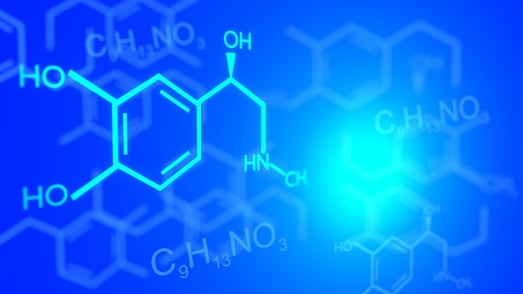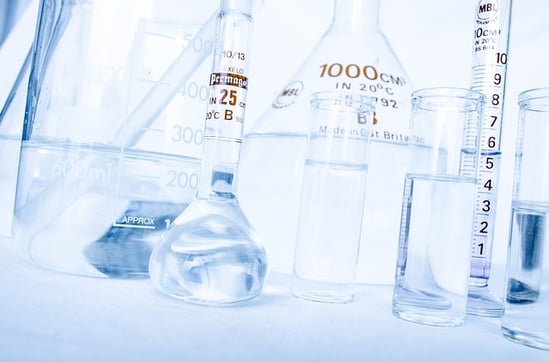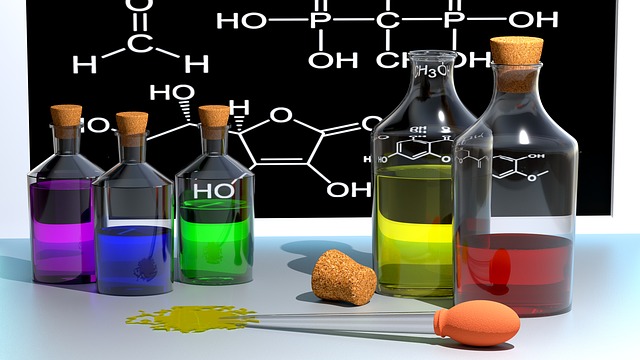what coefficients must be added to balance the following equation?
A chemical equation tells y'all what happens during a chemical reaction. A balanced chemic equation has the correct number of reactants and products to satisfy the Law of Conservation of Mass. In this article, we'll talk nigh what a chemical equation is, how to balance chemical equations, and give you lot some examples to aid in your balancing chemic equations practise. Merely put, a chemical equation tells you what's happening in a chemical reaction. Here's what a chemical equation looks similar: Iron + O2 → Fe2O3 On the left side of the equation are the reactants. These are the materials that y'all start with in a chemical reaction. On the right side of the equation are the products. The products are the substances that are fabricated as a result of a chemical reaction. In order for a chemical reaction to exist right, it needs to satisfy something called the Law of Conservation of Mass, which states that mass can't be created or destroyed during a chemical reaction. That means that each side of the chemical equation needs to have the same corporeality of mass, because the amount of mass can't exist changed. If your chemical equation has different masses on the left and right side of the equation, you'll demand to residuum your chemical equation. Balancing chemical equations ways that you lot write the chemical equation correctly so that there is the same corporeality of mass on each side of the arrow. In this section, we're going to explicate how to balance a chemical equation by using a real life example, the chemical equation that occurs when iron rusts: Iron + O2 → Iron2O3 The first step in balancing a chemical equation is to identify your reactants and your products. Call up, your reactants are on the left side of your equation. The products are on the right side. For this equation, our reactants are Iron andO two. Our products areIron two and O3. Side by side, you need to determine how many atoms of each chemical element are present on each side of the equation. You can do this by looking at the subscripts or the coefficients. If in that location is no subscript or coefficient present, then you just have one atom of something. Iron + O 2 → Iron 2 O 3 On the reactant side, we have one atom of fe and two atoms of oxygen. On the product side, nosotros accept two atoms of atomic number 26 and three atoms of oxygen. When you lot write out the number of products, yous tin can see that the equation isn't balanced, considering at that place are unlike amounts of each cantlet on the reactant side and the production side. That means we demand to add coefficients to make this equation balanced. Earlier, I mentioned that in that location are two ways to tell how many atoms of a particular element exist in a chemic equation: past looking at the subscripts and looking at the coefficients. When you balance a chemical equation, you change coefficients. Yous never change subscripts. A coefficient is a whole number multiplier. To balance a chemical equation, you add these whole number multipliers (coefficients) to make sure that there are the same number of atoms on each side of the arrow. Here's something important to remember nearly coefficients: they apply to every part of a product. For example, have the chemical equation for water: H2o. If y'all added a coefficient to go far 2H2O, so the coefficient multiples across all of the elements nowadays. Then, 2H2O means that yous have four atoms of hydrogen and two atoms of oxygen. You don't just multiply against the showtime chemical element present. So, in our chemical equation (Fe + O 2 → Fe ii O 3), whatever coefficient you add together to the product has to be reflected with the reactants. Let'southward expect at how to residue this chemical equation. On the product side, we have 2 atoms of iron and iii atoms of oxygen. Let's tackle atomic number 26 first. When outset looking at this chemical equation you might retrieve that something like this works: twoFe + O two → Fe 2 O 3 While that balances out the iron atoms (leaving 2 on each side), oxygen is still unbalanced. That means we need to proceed looking. Taking iron offset, we know that nosotros'll be working with a multiple of two, since there are two atoms of iron present on the product side. Knowing that using ii as a coefficient won't work, let's try the next multiple of two: four. ivIron + O 2 → 2Fe 2 O 3 That creates residuum for atomic number 26 past having four atoms on each side of the equation. Oxygen isn't quite balanced yet, but on the production side we accept half dozen atoms of oxygen. Six is a multiple of ii, so nosotros tin work with that on the reactant side, where 2 atoms of oxygen are present. That means that we can write our balanced chemical equation this way: 4Fe + 3O 2 → 3Fe 2 O 3 There are many places you can do balancing chemical equations practice online. Here are a few places with exercise problems you can utilize: Balancing chemical equations seems complicated, but information technology'south really not that hard! Your main goal when balancing chemical equations is to brand sure that in that location are the same amount of reactants and products on each side of the chemical equation arrow. Looking for more than chemistry guides ? Nosotros have manufactures that go over half dozen concrete and chemical change examples, the 11 solubility rules, and the solubility constant (K sp ), as well as info info on AP Chem, IB Chemistry, and Regents Chemistry. Writing a research paper for school but not certain what to write about? Our guide to research newspaper topics has over 100 topics in ten categories then you can be sure to observe the perfect topic for y'all. Want to know the fastest and easiest ways to convert between Fahrenheit and Celsius? We've got you covered! Check out our guide to the best ways to convert Celsius to Fahrenheit (or vice versa). Are y'all studying clouds in your scientific discipline class?Get help identifying the different types of clouds with our adept guide.
What Is a Chemical Equation?
How to Residue Chemical Equations—Explanation and Example

#1: Identify the Products and Reactants
#2: Write the Number of Atoms
#3: Add together Coefficients

3 Keen Sources of Balancing Chemic Equations Practice
Balancing Chemical Equations: Key Takeaways
What'due south Next?

Near the Writer
Hayley Milliman is a former teacher turned writer who blogs about education, history, and technology. When she was a teacher, Hayley'southward students regularly scored in the 99th percentile thank you to her passion for making topics digestible and accessible. In addition to her work for PrepScholar, Hayley is the author of Museum Hack'southward Guide to History'southward Fiercest Females.
Source: https://blog.prepscholar.com/balancing-chemical-equations
Belum ada Komentar untuk "what coefficients must be added to balance the following equation?"
Posting Komentar